If the esoteric wisdom of the Bhagavad Gita had to be translated and interpreted in the hedonistic lifestyle of a bustling city…if the wisdom of the eternal truth was to be visualized…and if art and spirituality met at a junction – the heady cocktail would be “Le Sutra” – the Indian art hotel located in Mumbai. Here every room brings alive a story told through its interior, décor, inlays, furniture and accessories. Everything is customized and unique, woven around the central theme of the three “gunas.” No two rooms are alike and staying in any room is a storybook experience.
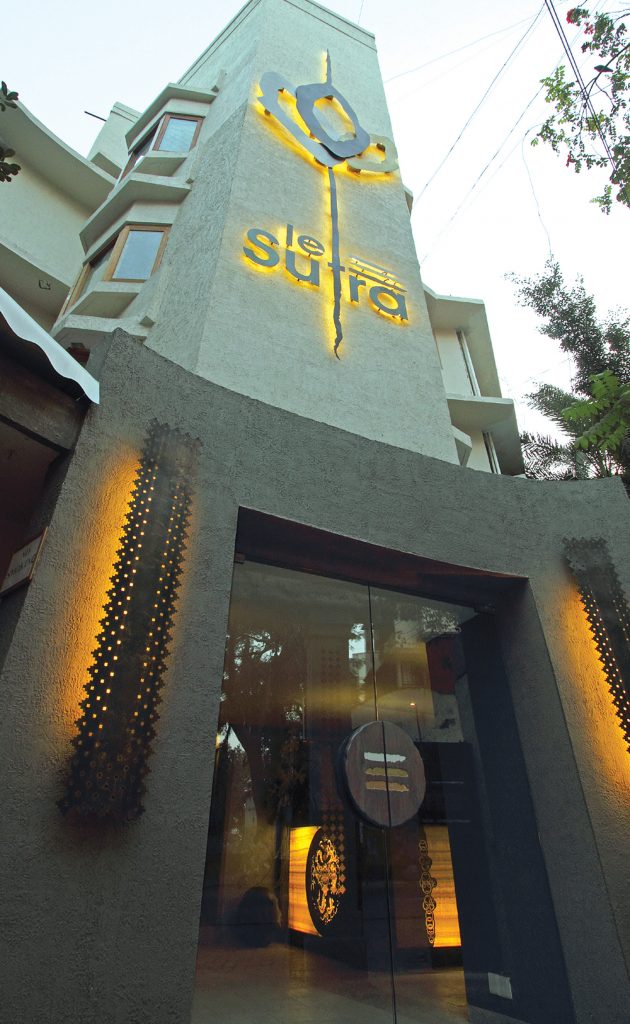
The hotel that claims to be the world’s first Indian art hotel is located at Union Park in the posh suburb of Bandra, about a 45-minute drive from Mumbai’s international airport. Anjolie Ela Menon, the famous artist says, “It’s very easy to copy something that others have created; it is very difficult to create something totally original and unique. This is a really unique hotel and it’s quite spectacular the way it has been done. This is a historic hotel both in terms of what they have achieved and what it has done for art. A chance has been given to many young artists, designers, painters and sculptors. Apart from having created a beautiful hotel, they have also given a platform to young talent.”
The Bhagavad Gita: The manifested universe (prakriti) is made up of the three gunas – Sattva, Rajas and Tamas. Everything in the universe can be categorized in these three gunas which are found in differing proportions in all of us. All the three gunas are present in each of us. Their interplay is the dynamics of personality.
“At Le Sutra, we’ve tried to weave thousands of years of Indian ethos and narrate it through contemporary Indian art. Each piece of art, either on the floor or the walls or even the furniture, is distinctive and specially commissioned for the theme of the room. Each room is unique in itself when seen in isolation. However, when all the rooms are considered together, it adds up to the wholesome, inimitable experience that tunes the mind to connect with itself,” says Mitali, who has handled the entire design and art of the hotel.
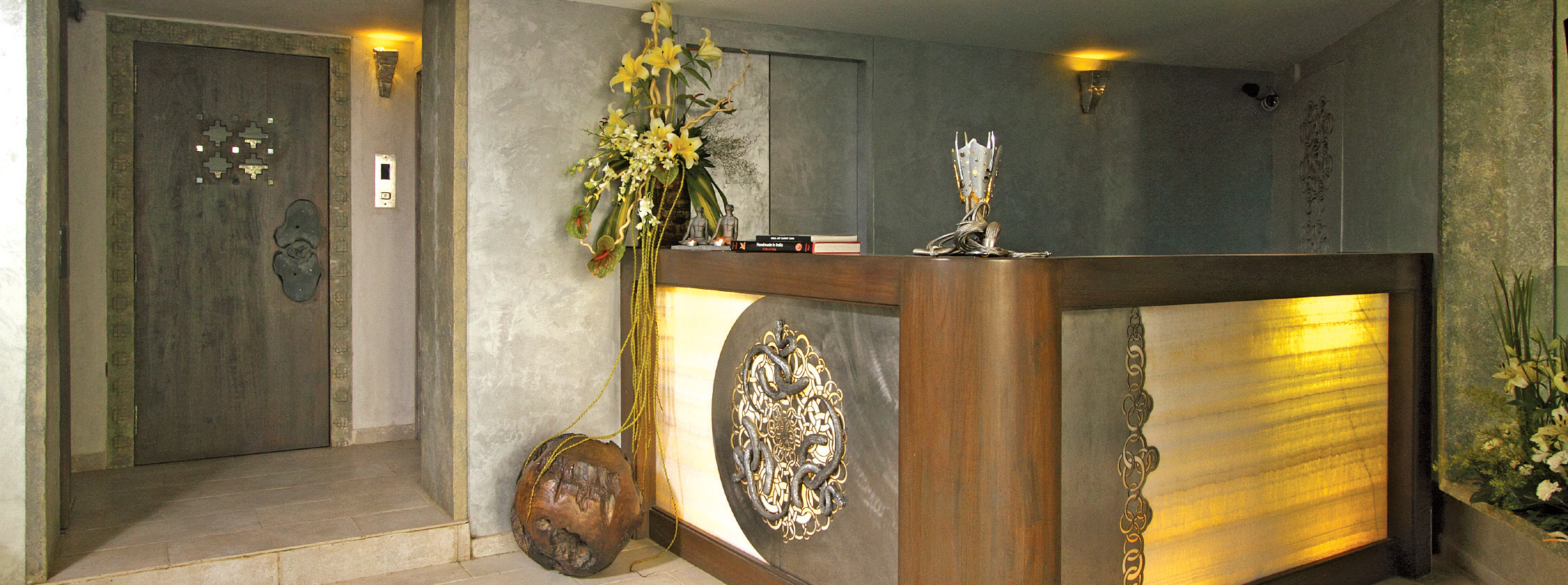
Actually what strikes a chord is the innovative and creative way of telling the room’s story through paintings, décor, sculpture, chairs, artifacts, upholstery and furnishings, and combining it with utility, ergonomics and art. Given that every color, metal, stone, planet, emotion, person,intricacy of craftsmanship etc., can be classified in its guna; the designers had a rich palette to translate the stories through art. Vincent Fantuazzo, the Australian artist says, “It is Indian art and India has such a strong art history, every room and every object tell a story. Even today we are learning about the rooms and its storytelling. It’s so original, not just prints on the wall.”
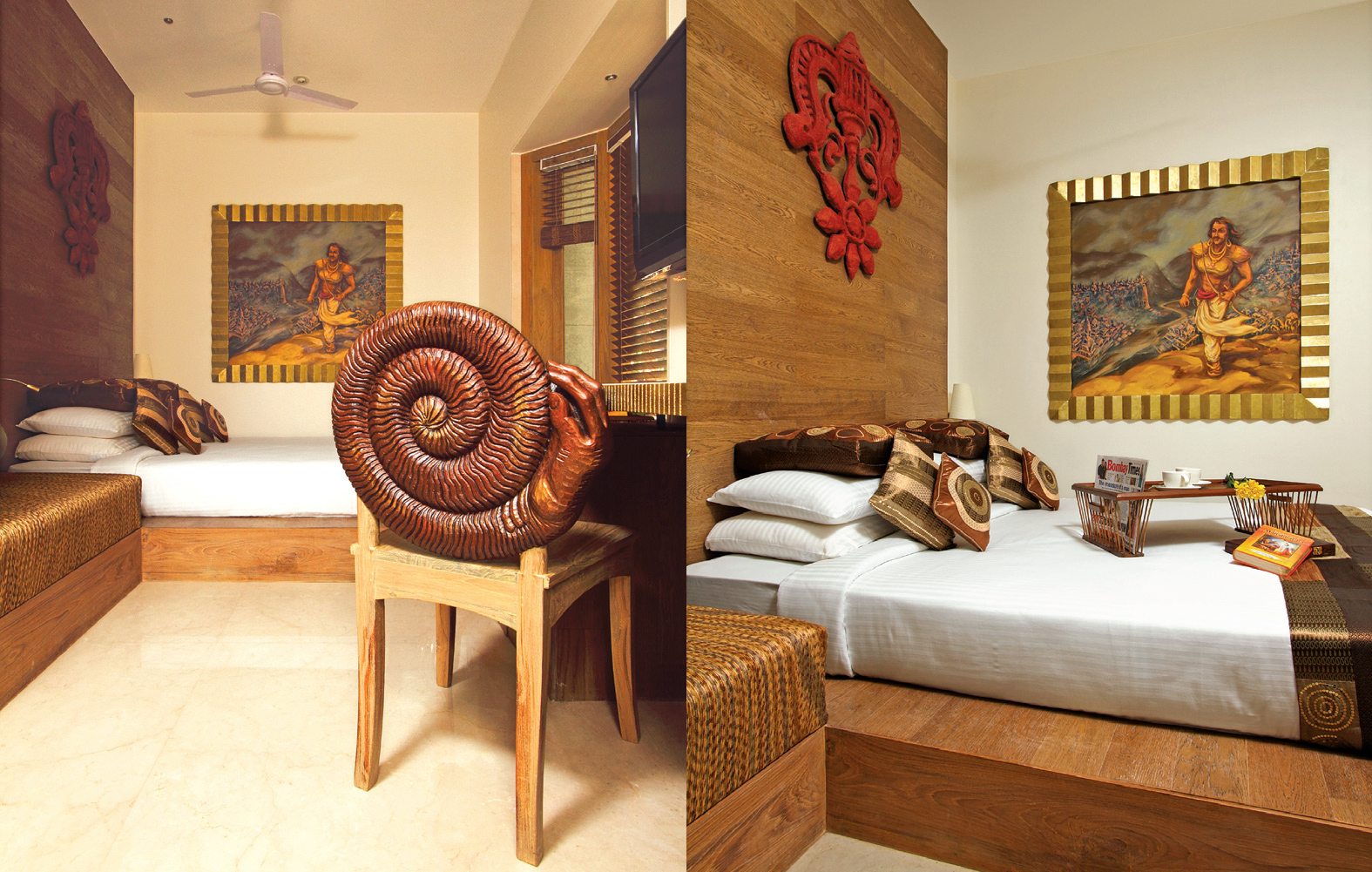
The Bhagavad Gita: God says that all the actions are a result of the interplay of gunas. The wise realize this and those who rise above it leave behind the cycle of birth and death and attain immortality.
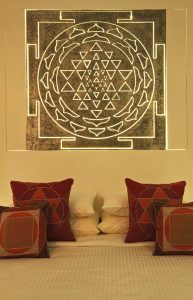 The reception area at Le Sutra is based on the concept of Kundalini – the cosmic energy that lies dormant at the base of the spine and the sixteen rooms are based on “characters” (Ravana, Karna, the Buddha), or “characteristics” (sensuality, love, purification) inspired by Indian mythology. The hotel has three floors: the ground floor has the reception area, the first floor is Tamas, the second floor is Rajas, and the third floor is Sattva. One thing I observed was that the rooms on the Tamas floor were smaller, on the Rajas floor a little bigger, and on the Sattva floor spacious and open…maybe because as we ascend the gunas we become more evolved, more open, and more liberated.
The reception area at Le Sutra is based on the concept of Kundalini – the cosmic energy that lies dormant at the base of the spine and the sixteen rooms are based on “characters” (Ravana, Karna, the Buddha), or “characteristics” (sensuality, love, purification) inspired by Indian mythology. The hotel has three floors: the ground floor has the reception area, the first floor is Tamas, the second floor is Rajas, and the third floor is Sattva. One thing I observed was that the rooms on the Tamas floor were smaller, on the Rajas floor a little bigger, and on the Sattva floor spacious and open…maybe because as we ascend the gunas we become more evolved, more open, and more liberated.
Tamas – First Floor
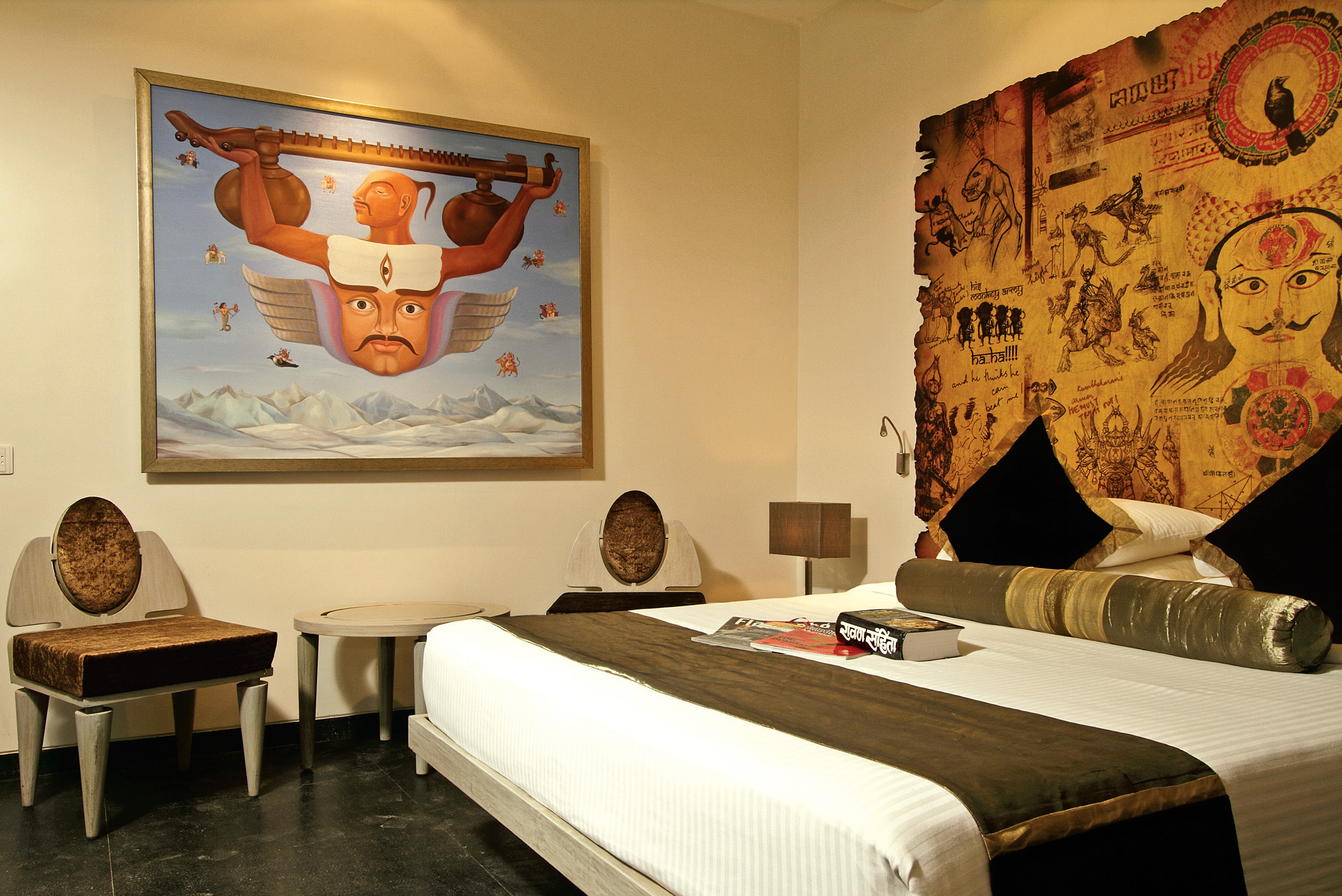

Rajas – Second Floor
The Bhagavad Gita: Sattva is the highest level; it is pure, luminous and free from sorrow. Sattva binds us to happiness; those who live in Sattva go upwards and progress. The Sattva floor rooms are Mandala, Shuddhi, Prakriti, and Nirvana.
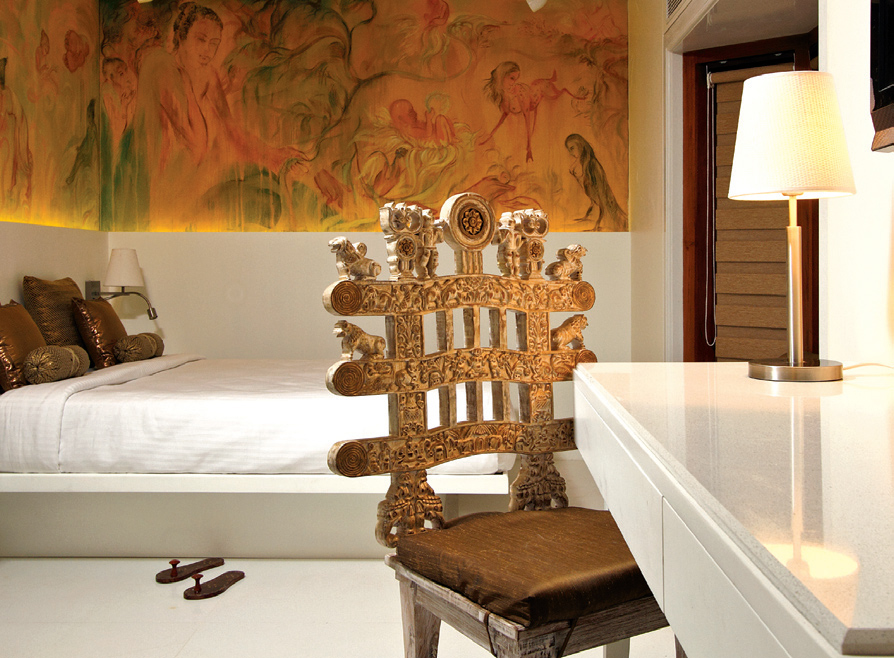
Mandala is derived from the Sanskrit word Manda which means essence, and la is the suffix which means container. Thus it means “container of the essence of energy.” Mandala represents wholeness and can be seen as a geometrical cosmic diagram which connects the finite to the infinite, the world that exists both beyond and within our mind.
As I enter the Mandala room, I feel a certain lightness and energy in the air. Maybe its energy levels are high because of the rose quartz clusters on the top shelf and a large Shree Yantra hung over the bed. (Shree Yantra is considered the greatest and the most auspicious of all yantras and represents Goddess Lakshmi.) Perhaps Mallika Sarabhai, the famous dancer too felt this energy. She said, “I hope the people who will come and stay in these rooms will rediscover the joy of 5000 years of creativity. If there is anything with which we resonate, it is with this aesthetic. It does not matter whether you are a Hindu, Muslim or Christian, the sheer energy, the sheer vibrancy, the kinetic energy that is the Shree Yantra is something that we must relearn to resonate with.”
All the rooms on the Sattva floor are noteworthy. Nirvana draws inspiration from the life and teachings of the Buddha and the highlight of this room is the Stupa chair inspired by the stupa of Sanchi. Prakriti is nature and all the elements of the female dynamic energy that manifests in the universe. The room makes generous use of natural elements like roots, seeds, dried leaves and so on. Shuddhi is all about cleansing and purification, both at physical as well as subtle levels.
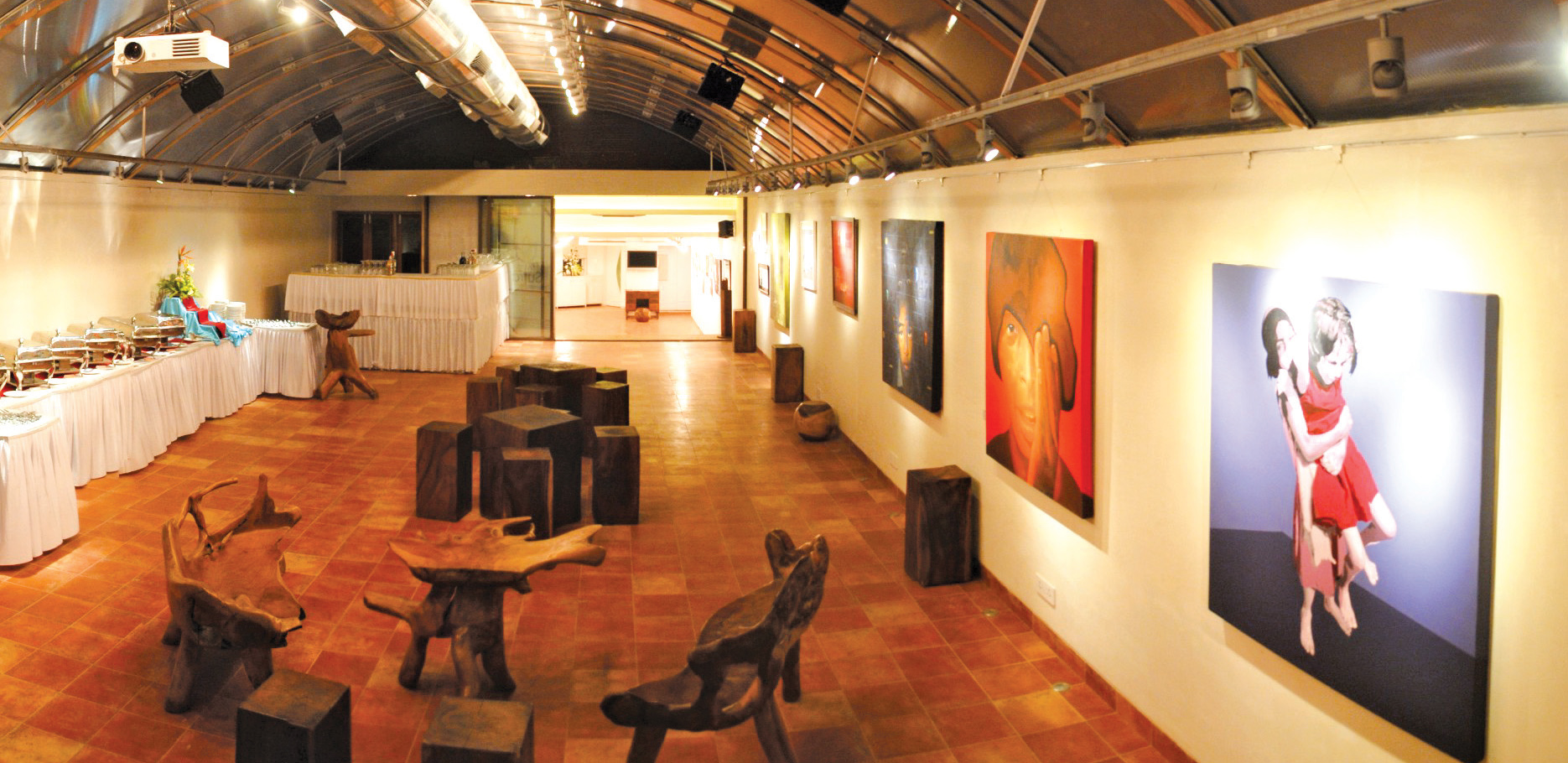
The chakras are energy centers that lie at the vertical axis of the subtle body which co-relates to the spinal cord of the physical body. They are aspects of consciousness. They form the ladder leading up to the apex of spiritual awakening. Each chakra has a specific function, a specific color, and governs a specific organ in the body. The chakras are considered to be focal points of reception and transmission of energy. In an ordinary person, the chakras are small circles and the color is very dull. In an awakened person, they are seen as blazing whirlpools of color and energy. There are seven chakras in our body.
The hotel elevator that takes you to these three levels is symbolized with the Kundalini energy and the floors with the chakras. Here you can traverse the various chakras as you travel in the “lift,” representative of the Kundalini, the dormant cosmic energy within us associated with the rising of consciousness.
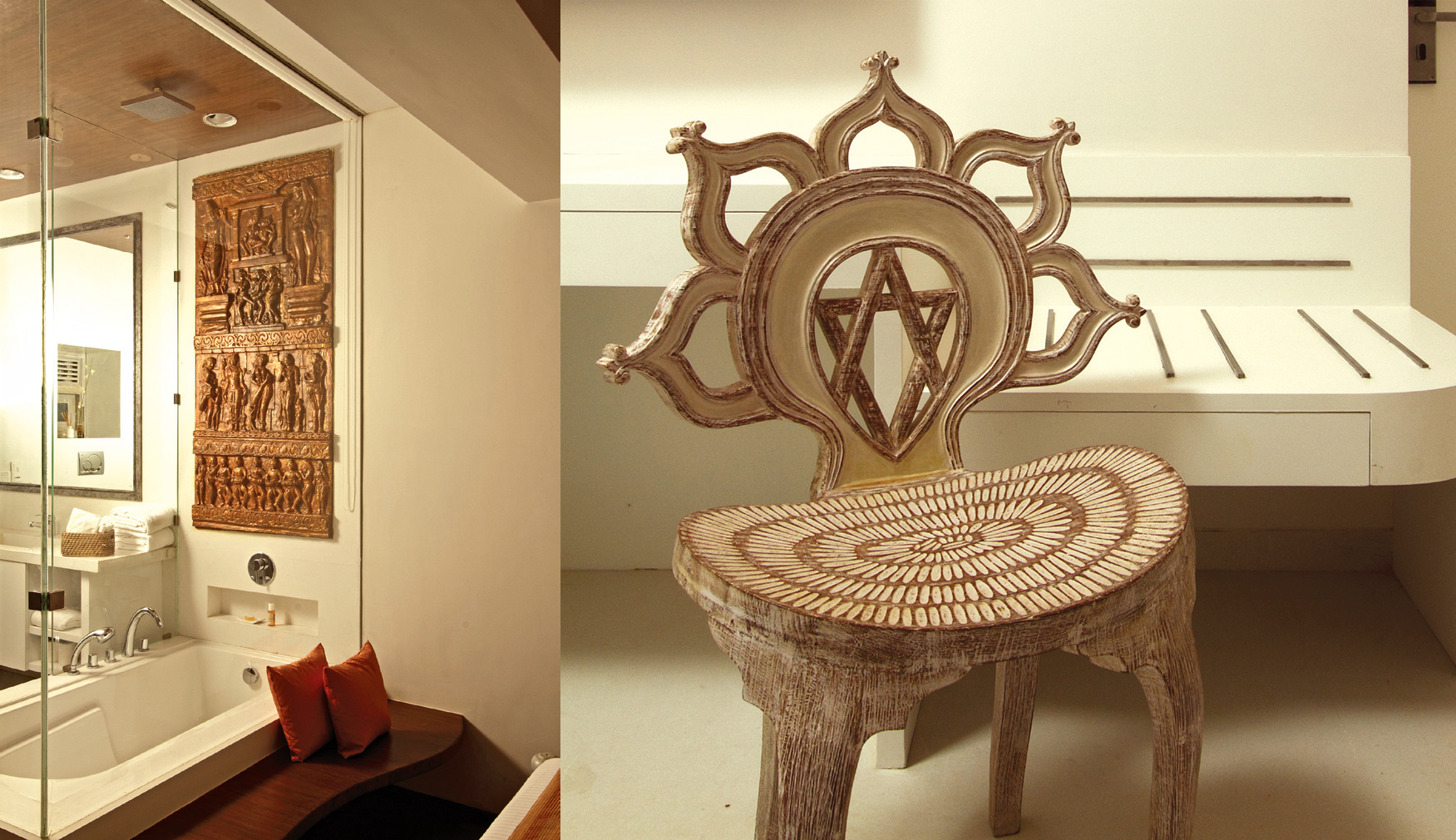
For those who seek nirvana through food, there are ample options to indulge in and enjoy the best international foods in this part of the town. Out of the Blue serves sizzlers, pasta, fondue, soups and salads; Olive Bar and Kitchen (an award-winning restaurant) is one of the most vibrant speciality restaurants offering authentic Mediterranean cuisine; and Deliciae, the dessert café, are on its premises. There is also Gallery Le Sutra, the dedicated art and cultural space on the Sattva level where art exhibitions, book readings, supper club, events and conferences, are held. Staying at Le Sutra can set you back by $250 per day for single occupancy and $300 per day for double occupancy. All the rooms are priced the same, irrespective of the floor and size.
To sum up, Le Sutra is an artistic creative adventure. It goes way beyond the conventional hotel experience to tantalize and soothe the mind – with its concept, art, and luxury.
Other Interesting Rooms
DYUUTYA (Rajas Floor) “Life is a gamble,” and this room is representative of life being a game of pitch-and-toss. Gambling (Dyuutya) was the royal pastime of the kings (rajas). Agile of mind, deft of wrist, using cunning and craft, they won and lost empires at the turn of the dice – on board and on the battlefield. The great battle of the Mahabharata was the outcome of a gambling match. Here the headboard of the bed is in the form of a chess board and the knights are the lower bed posts. The Saap Seedi chair is a depiction of the game of Snakes (Saap) and Ladders (Seedi).
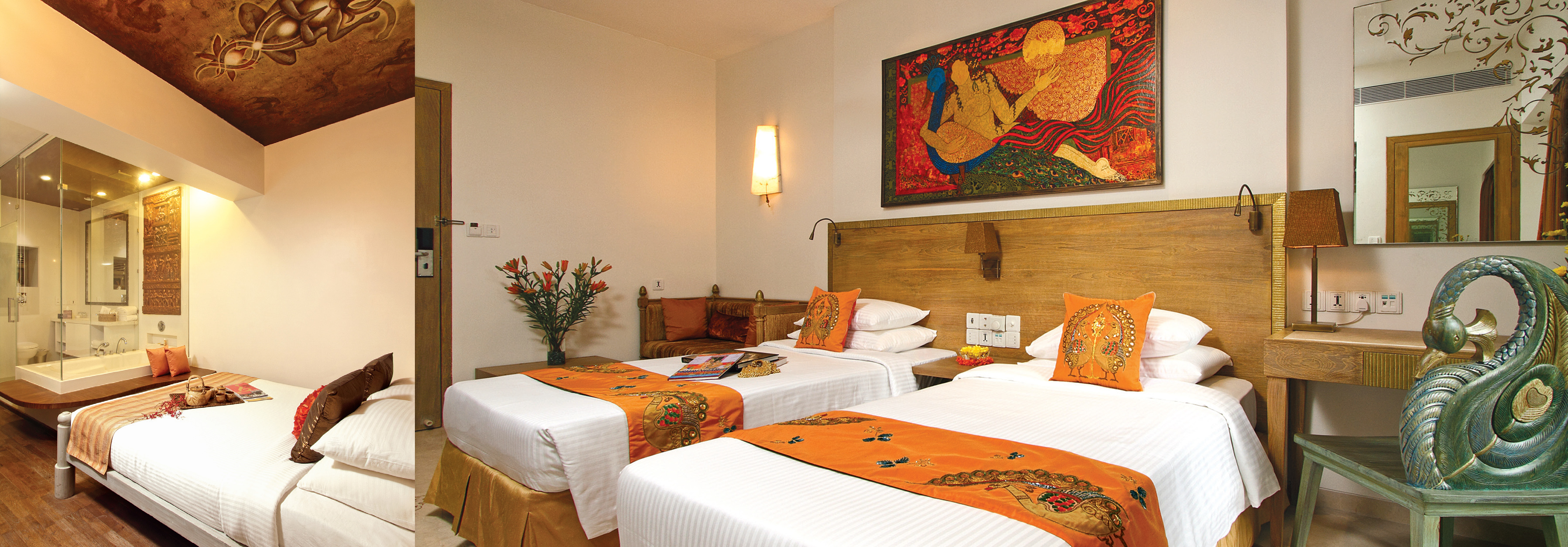
SHRINGAR (Rajas Floor) Shringar is the art of adornment, romance, culture, beauty and enjoyment. Beauty is nothing without grace and shringar is the delicate unison of beauty and grace. The nathni or nose stud is the most seductive of all the ornaments worn for shringar and is mentioned even in the Vedic scripts. In the room, a beautiful painting showcases the different moods of a woman and portrays the idea of self love through beautification. A peacock chair brings the romance alive.
KATHAK (Rajas Floor) Kathak comes from the Sanskrit word Katha which means story, and a Kathak dancer is a storyteller. Patronized by the kings of the Mughal era, this is the ancient dance form where hand gestures and facial expressions weave the entire story together. The three art installations of Dancing Feet, Harmonium, and Dholak in the Kathak room are striking. The Sarangi chair is a depiction of the musical instrument Sarangi.
VAASNA (Tamas floor) Vaasna is sensuality in Sanskrit. The theory closest to the truth contends that all creation is the balance of opposites: light and dark, positive and negative, dynamic and kinetic. All these opposites can be best typified as male and female. It is the principle of duality which presides over all these energies. The creation sustaining equilibrium of these opposing forces serves two purposes: the procreative and the creative. It is a state of pure awareness and awakening of the consciousness from ignorance, confusion and self. It is a fusion of “I” and “You” into “We,” and ultimately “We” is transformed into “One.” The Sex to Salvation lamp, sensuous figurines, and the Khajuraho miniatures create an erotic ambience in the room.







